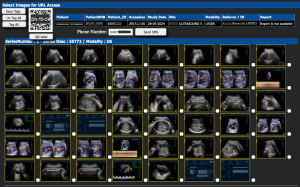The DICOM Standard is not the most efficient method of transporting data between systems over wide area networks.
- each DICOM file contains header information that is replicated in every image. this is considered a huge over head or duplication of data.
- DICOM SCP (service class provider) / SCU (service class user) communicate over their own TCP/IP Protocol. There are other transmission methods that are far more efficient.
- Many Vendors change the image “DICOM Flavour” to improve image transfer.(alter the image content)
Cynetics have developed “compression systems” that think beyond the DICOM standard for efficient transfer of DICOM Data. We can provide improved image transfer speeds over WAN without compromising image quality through DICOM Compression. (lossless imaging )
One of our first projects was to achieve multi site comprehensive imaging tele-radiology on very low bandwidth connections shared with off site RIS data. (512kb/sec).
We managed to shift over 400 comprehensive modality studies from 5 remote sites over these slow networks to a reporting bunker, all within business hours.
With the NBN now rolled out, there is still a use for these systems as they ensure the complete Study is delivered and cannot be reported before all images arrive.
This system can be integrated into Cynetics RIS as a Send or Receive system.
ie: TeleRadiology Source or Reporting Destination.

